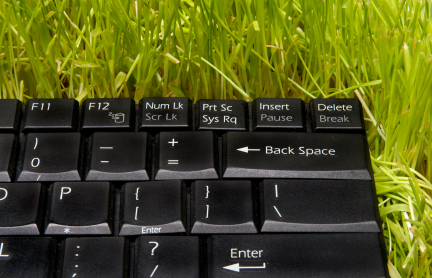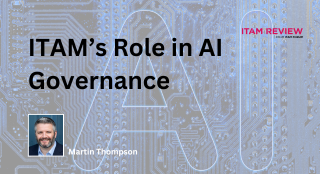Computer Aid International: "Donating PCs Is Green"

A UN 2003 analysis stated that at least 240 kilograms of fossil fuels, 22 kilograms of chemicals and 1,500 kilograms of water are required to produce one desktop computer and monitor.
Computer Aid International has called upon IT Asset Managers across all industry verticals with a plea to realise that equipment donation should play a central role in every ITAM professional’s eco-strategy.
The UK registered charity, which champions “equal access” to ICT for all, has said cited its own research conducted in September 2011 showing that companies typically replace their base units every 3.7 years and their monitors every four years.
However, given that modern-build computers can typically last for between 8- to 10-years when properly refurbished, this means that most PCs, laptops and monitors are typically discarded less than half way through their working life.
Pinpointing the green eco-angle here the charity asserts that,
“The initial resource cost of manufacturing computers is high — a UN 2003 analysis stated that at least 240 kilograms of fossil fuels, 22 kilograms of chemicals and 1,500 kilograms of water are required to produce one desktop computer and monitor. Furthermore, many of the resources used are either toxic (arsenic, lead, mercury) or very scarce, so it makes sense to extend the life of the equipment for as long as possible.”
Despite these findings, Computer Aid research has further found that only 14% of the UK’s largest companies reuse their redundant working IT equipment — with 63 per cent citing data protection concerns as a reason for avoiding reuse. Although these figures are worrying, 83% of firms say that would like to reuse more equipment where possible.
The Environment Agency’s Waste Electrical and Electronic Equipment (WEEE) Directive also encourages reuse as it follows the EU waste hierarchy, which encourages the prevention of waste, followed by the reuse and refurbishment of goods, then value recovery through recycling and finally energy recovery.
“As well as the green arguments behind reuse, there are significant social as well as environmental benefits to reuse. Many millions of people around the world cannot afford a computer or laptop and unwanted computers disposed of or recycled by companies could be used to help whole communities in the developing world to improve their health, education and employment potential,” said the organisation, in a press statement.
Computer Aid, has found that just one donated computer can:
- Connect a rural health care centre with specialists in capital cities or overseas and facilitate lifesaving treatment to a whole community in Africa.
- Provide 60 children with vocational level IT skills, improving their future prospects for employment and higher education

Andrew Donoghue, 451 Research
Commenting on the state of affairs in IT asset management reuse and the challenges faced by companies looking to better there green credentials in this vein, 451 Research analyst Andrew Donoghue said that the kind of re-use championed by Computer Aid has benefits beyond recycling or disposal.
“A lot of attention is given to recycling (especially by the large PC suppliers) but re-use of refurbished functional PCs is as, if not more, sustainable. Breaking down a machine for its parts while it still functional is a more expensive, and more environmentally costly, process than selling it on, or donating it to an organisation like Computer Aid.”
This year, Computer Aid is appealing for 50,000 PCs to meet demand from schools, hospitals and charities in developing countries. The charity offers a free CESG approved data wiping service, full WEEE compliance and asset tracking as well as case studies of where equipment has been sent to in return for donations of IT. More information on donating to the charity can be found at https://www.computeraid.org/donate.asp
Can’t find what you’re looking for?
More from ITAM News & Analysis
-
Broadcom vs Siemens AG - A Brewing Storm
The ongoing legal battle between VMware (under Broadcom ownership) and Siemens is yet another example of why ITAM goes far beyond license compliance and SAM. What might, at first glance, appear to be a licensing dispute, ... -
Shifting Left Together: Embedding ITAM into FinOps Culture
During one of the keynotes at the FinOps X conference in San Diego, JR Storment, Executive Director of the FinOps Foundation, interviewed a senior executive from Salesforce. They discussed the idea of combining the roles of ... -
Addressing the SaaS Data Gap in FinOps FOCUS 2.1
I recently reported on the FinOps Foundation’s inclusion of SaaS and Datacenter in its expanded Cloud+ scope. At that time, I highlighted concerns about getting the myriad SaaS companies to supply FOCUS-compliant billing data. A couple ...
Podcast
ITAM training
Similar Posts
-
The M&S Cyberattack: How IT Asset Management Can Make or Break Your Recovery
Marks & Spencer (M&S), the iconic UK retailer, recently became the latest high-profile victim of a devastating cyberattack. Fellow retailers The Co-Op and Harrods were also attacked. Recent reports suggest the rapid action at the Co-Op ... -
AI in ITAM: Insightful Signals from the Front Line
During our Wisdom Unplugged USA event in New York in March 2025, we engaged ITAM professionals with three targeted polling questions to uncover their current thinking on Artificial Intelligence—what concerns them, where they see opportunity, and ... -
How ISO/IEC 19770-1 Can Help Meet FFIEC Requirements
In the world of ITAM, the regulatory spotlight continues to intensify, especially for financial institutions facing increasing scrutiny from regulatory bodies due to the growing importance of IT in operational resilience, service delivery, and risk management. ... -
An Introduction to Scope 4 Emissions
Executive Summary For ITAM teams, sustainability is a core responsibility and opportunity. Managing hardware, software, and cloud resources now comes with the ability to track, reduce, and report carbon emissions. Understanding emission scopes—from direct operational emissions ...




